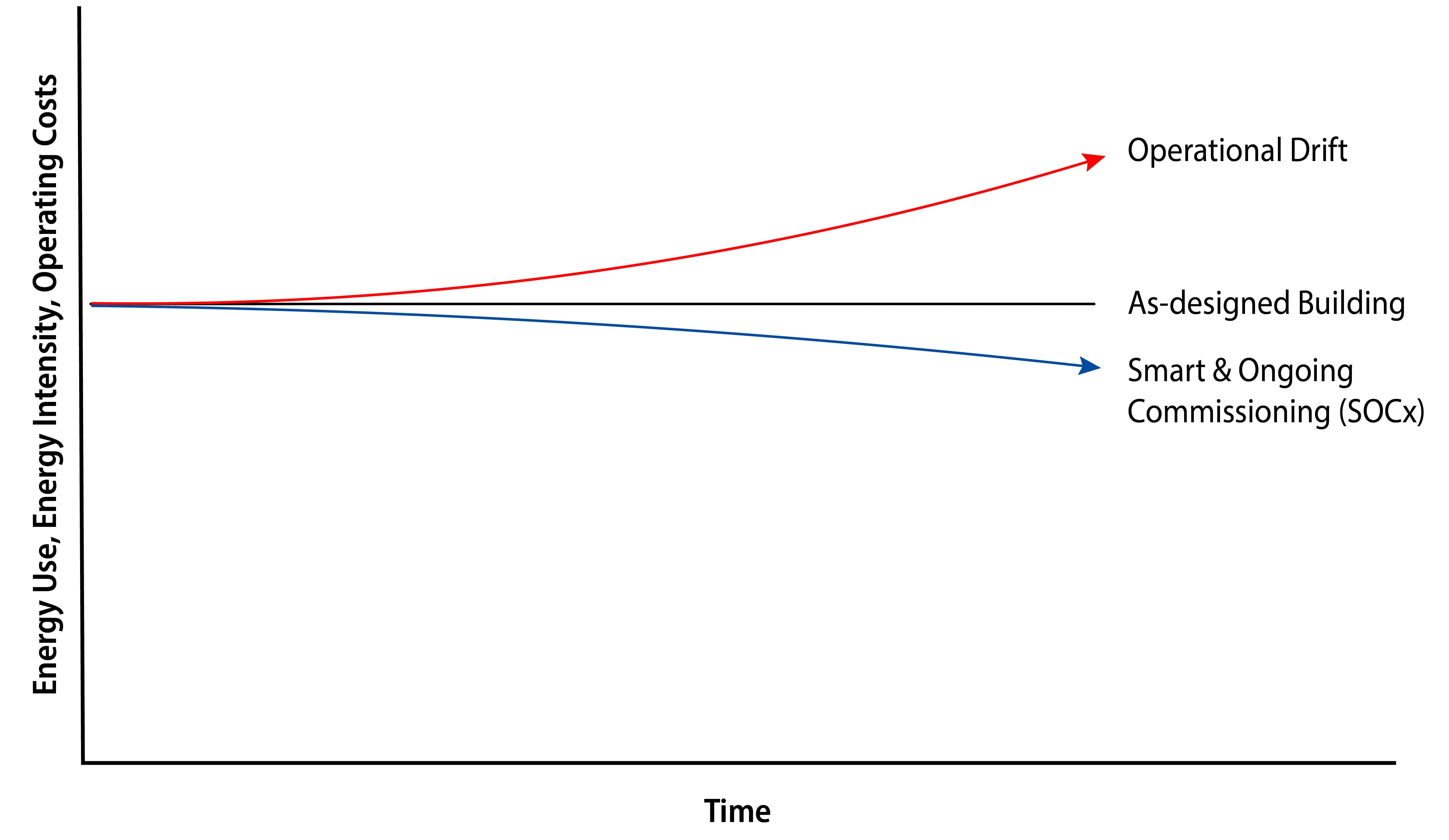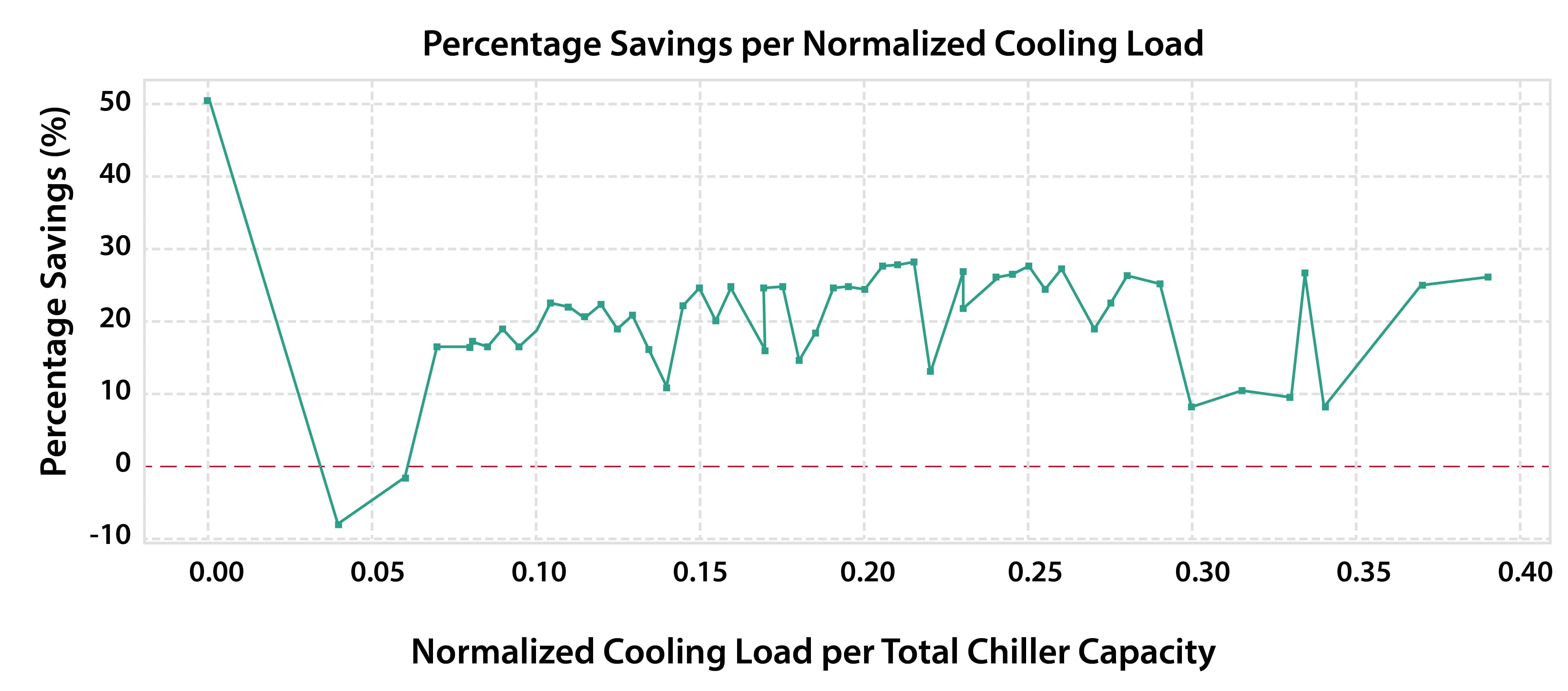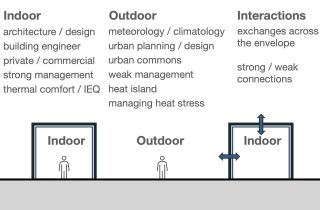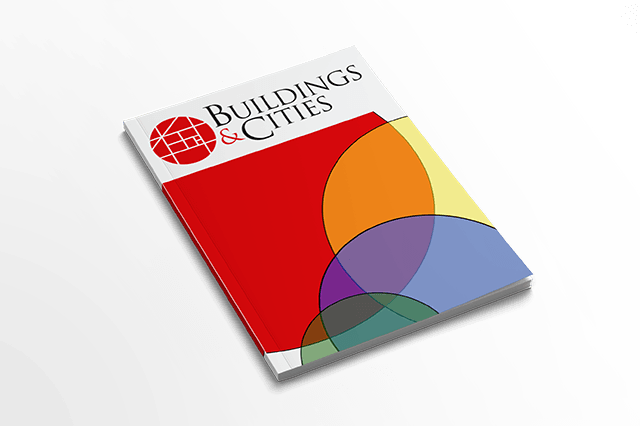
www.buildingsandcities.org/insights/commentaries/artificial-intelligence-decarbonisation.html
Artificial Intelligence and Decarbonisation

How building research can harness AI for mass decarbonisation
Ten years ago, it was rare to read building science papers referencing learning algorithms, sensor networks, cloud computing or digital twins. Now, data-driven techniques are at the core of building decarbonisation research, generating both new opportunities and new risks. Jenn McArthur (Toronto Metropolitan University) reflects on how the rise of artificial intelligence (AI) is transforming building decarbonisation research.
The rise of AI
Enablers of the rise of AI include Internet-of-Things (IoT) technologies, "smart" systems, and the ubiquity of building sensor networks to support building automation, which together generate enormous volumes of building data. With the rise of cloud computing, both increasing the computational power available for researchers and decreasing data storage costs, there has been a nearly exponential growth in studies leveraging AI technologies to improve building performance as well as a significant evolution in the algorithm types being used by scholars.

The majority of studies applying AI to improving building performance can be clustered into three categories: energy prediction, controls optimisation, and fault detection & diagnosis (FDD) (Fan et al. 2024). These, in turn, enable Smart and Ongoing Commissioning (SOCx)- the real-time monitoring and optimisation of building performance. SOCx has been shown to reduce energy and associated carbon emissions by 15% beyond traditional energy management best practice (Shen et al. 2017), offsetting the natural tendency for building energy to increase over time (Figure 1) due to faults, controls overrides, and sensor drift.
The starting point for such research is building energy prediction, and this has seen significant change over the past decade. Faced with the high level of effort to develop physics-based ("white-box") models to predict building behaviour, researchers have increasingly been turning to data-driven methods, either alone ("black-box") or to simplify physics-based models to create hybrid ("grey-box") models, with an exponential rise in such studies since 2015. Deep learning - a subfield of AI leveraging neural networks - have become commonplace in current research, allowing even the most complex non-linear data to be modelled and predicted with high accuracy (Li et al. 2024). When integrated with controls optimisation using reinforcement learning, such models have demonstrated building energy management savings of 25-30% (Yu et al. 2021).

Other recent trends include the use of physics-informed neural networks, a type of deep learning, and symbolic regression to model building performance as this permits the physics to be accounted for, dramatically reducing the time needed to train models in new buildings (the 'cold start' period). A recent chiller plant control optimisation project by the author (unpublished) used this method to achieve 22% savings in a large hospital (Figure 2).
FDD approaches have also seen a significant shift towards hybrid methods. While initially, many scholars relied on simulated data due to the lack of labelled datasets, others turned to unsupervised approaches to overcome this limitation. Unsupervised methods, however, merely cluster the data to detect faults but cannot diagnose them. Semi-supervised learning is showing significant promise in overcoming this challenge, with a substantial rise of studies using this approach since 2020 (Ramírez-Sanz et al. 2023). Given that faults can result in 15% to 30% wasted energy and associated CO2 emissions (Katipamula & Brambley 2005), developments in this area will be critical to decarbonisation.
Implementation at scale
Scaling beyond a single building poses significant challenges - with or without AI. Poor interoperability between systems limits the re-use of approaches across buildings, while the 'cold start' period of initial data collection delays each implementation. Transfer learning offers one solution. This method has emerged over the past five years and allows a model to be trained in one context and deployed in a second, transferring the initial learning and refines the model as new data becomes available. This can be applied by itself or to support rapid training of reinforcement learning agents (Genkin & McArthur 2024).
Large language models (LLMs) also provide significant scaling potential. They can make sense of unstructured data to support automated energy optimisation (Xiao & Xu 2024) to speed up SOCx deployment or to improve building energy models (Zhang et al. 2024). Beyond the building scale, LLMs can be used to develop urban energy models (Choi & Yoon 2024) to support city- and district-level decarbonisation plans.
Risks and challenges
While extremely powerful, the widespread use of AI has introduced several threats to buildings research. First, the quantity of data, its content, and the means to collect it - particularly when IoT devices are used - pose a significant cybersecurity threat to buildings. One does not want to see the building systems hacked through an unprotected 'smart' device. Similarly, personal information could be collected - either directly or indirectly through occupancy patterns - raising concerns about data privacy that must be addressed. As with all simulations, garbage in equals garbage out and both data quality and the appropriateness of selected features are key. LLMs are prone to hallucinations - particularly for calculations - while black-box models merely fit the available data and do not consider the underlying physics. This limitation is often overlooked, particularly by those without a background in building physics. Given the prescriptive nature of traditional building controls, the available data falls within a narrow domain, limiting result validity to the status quo. Given that black-box models dominate the literature, and may not be reliable, there are significant risks from their misapplication. Hybrid models are much more trustworthy for controls optimization, but require a knowledge of building physics to develop.
Given the imperative to decarbonise the built environment, AI offers significant value to both improve existing building performance and inform large-scale interventions. However, researchers must be careful in its use and recognise its limitations. As with all simulations, users should be able to visualise what results ought to look like, and thus AI should be used to complement expertise, not replace it. Used well, the rise of AI will support decarbonisation research to achieve the scale of impact necessary to respond to the climate crisis.
References
Choi, S., & Yoon, S. (2024). GPT-based data-driven urban building energy modeling (GPT-UBEM): Concept, methodology, and case studies. Energy and Buildings, 115042.
Fan, C., Lei, Y., Mo, J., Wang, H., Wu, Q. & Cai, J. (2024). Novel machine learning paradigms-enabled methods for smart building operations in data-challenging contexts: Progress and perspectives. National Science Open, 3(3), 20230068.
Genkin, M., & McArthur, J. (2024). A transfer learning approach to minimize reinforcement learning risks in energy optimization for automated and smart buildings. Energy and Buildings, 303, 113760.
Katipamula, S., & Brambley, M. (2005). Methods for fault detection, diagnostics, and prognostics for building systems--a review, part I. HVAC&R Research, 11(1), 3-25.
Li, Y., Antwi-Afari, M., Anwer, S., Mehmood, I., Umer, W., Mohandes, S. . . . Li, H. (2024). Artificial Intelligence in Net-Zero Carbon Emissions for Sustainable Building Projects: A Systematic Literature and Science Mapping Review. Buildings, 14(9), 2752.
Ramírez-Sanz, J., Maestro-Prieto, J., Arnaiz-González, Á. & Bustillo, A. (2023). Semi-supervised learning for industrial fault detection and diagnosis: A systemic review. ISA transactions, 143, 255-270.
Shen, W., Xue, H., Newsham, G. & Dikel, E. (2017). Smart building monitoring and ongoing commissioning: A case study with four canadian federal government office buildings. 2017 IEEE International Conference on Systems, Man, and Cybernetics (SMC), (pp. 176-181).
Xiao, T. & Xu, P. (2024). Exploring automated energy optimization with unstructured building data: A multi-agent based framework leveraging large language models. Energy and Buildings, 332, 114691.
Yu, L., Qin, S., Zhang, M., Shen, C., Jiang, T. & Guan, X. (2021). A review of deep reinforcement learning for smart building energy management. IEEE Internet of Things Journal, 8(15), 12046-12063.
Zhang, L., Ford, V., Chen, Z. & Chen, J. (2024). Automatic building energy model development and debugging using large language models agentic workflow. Energy and Buildings, 115116.
Latest Peer-Reviewed Journal Content
Youth engagement in urban living labs: tools, methods and pedagogies
N Charalambous, C Panayi, C Mady, T Augustinčić & D Berc
Co-creating urban transformation: a stakeholder analysis for Germany’s heat transition
P Heger, C Bieber, M Hendawy & A Shooshtari
Placemaking living lab: creating resilient social and spatial infrastructures
M Dodd, N Madabhushi & R Lees
Church pipe organs: historical tuning records as indoor environmental evidence
B Bingley, A Knight & Y Xing
A framework for 1.5°C-aligned GHG budgets in architecture
G Betti, I Spaar, D Bachmann, A Jerosch-Herold, E Kühner, R Yang, K Avhad & S Sinning
Net zero retrofit of the building stock [editorial]
D Godoy-Shimizu & P Steadman
Co-learning in living labs: nurturing civic agency and resilience
A Belfield
The importance of multi-roles and code-switching in living labs
H Noller & A Tarik
Researchers’ shifting roles in living labs for knowledge co-production
C-C Dobre & G Faldi
Increasing civic resilience in urban living labs: city authorities’ roles
E Alatalo, M Laine & M Kyrönviita
Co-curation as civic practice in community engagement
Z Li, M Sunikka-Blank, R Purohit & F Samuel
Preserving buildings: emission reductions from circular economy strategies in Austria
N Alaux, V Kulmer, J Vogel & A Passer
Urban living labs: relationality between institutions and local circularity
P Palo, M Adelfio, J Lundin & E Brandão
Living labs: epistemic modelling, temporariness and land value
J Clossick, T Khonsari & U Steven
Co-creating interventions to prevent mosquito-borne disease transmission in hospitals
O Sloan Wood, E Lupenza, D M Agnello, J B Knudsen, M Msellem, K L Schiøler & F Saleh
Circularity at the neighbourhood scale: co-creative living lab lessons
J Honsa, A Versele, T Van de Kerckhove & C Piccardo
Positive energy districts and energy communities: how living labs create value
E Malakhatka, O Shafqat, A Sandoff & L Thuvander
Built environment governance and professionalism: the end of laissez-faire (again)
S Foxell
Co-creating justice in housing energy transitions through energy living labs
D Ricci, C Leiwakabessy, S van Wieringen, P de Koning & T Konstantinou
HVAC characterisation of existing Canadian buildings for decarbonisation retrofit identification
J Adebisi & J J McArthur
Simulation and the building performance gap [editorial]
M Donn
Developing criteria for effective building-sector commitments in nationally determined contributions
P Graham, K McFarlane & M Taheri
Join Our Community

The most important part of any journal is our people – readers, authors, reviewers, editorial board members and editors. You are cordially invited to join our community by joining our mailing list. We send out occasional emails about the journal – calls for papers, special issues, events and more.
We will not share your email with third parties. Read more



Latest Commentaries
COP30 Report
Matti Kuittinen (Aalto University) reflects on his experience of attending the 2025 UN Conference of the Parties in Belém, Brazil. The roadmaps and commitments failed to deliver the objectives of the 2025 Paris Agreement. However, 2 countries - Japan and Senegal - announced they are creating roadmaps to decarbonise their buildings. An international group of government ministers put housing on the agenda - specifying the need for reduced carbon and energy use along with affordability, quality and climate resilience.
Building-Related Research: New Context, New Challenges
Raymond J. Cole (University of British Columbia) reflects on the key challenges raised in the 34 commissioned essays for Buildings & Cities 5th anniversary. Not only are key research issues identified, but the consequences of changing contexts for conducting research and tailoring its influence on society are highlighted as key areas of action.